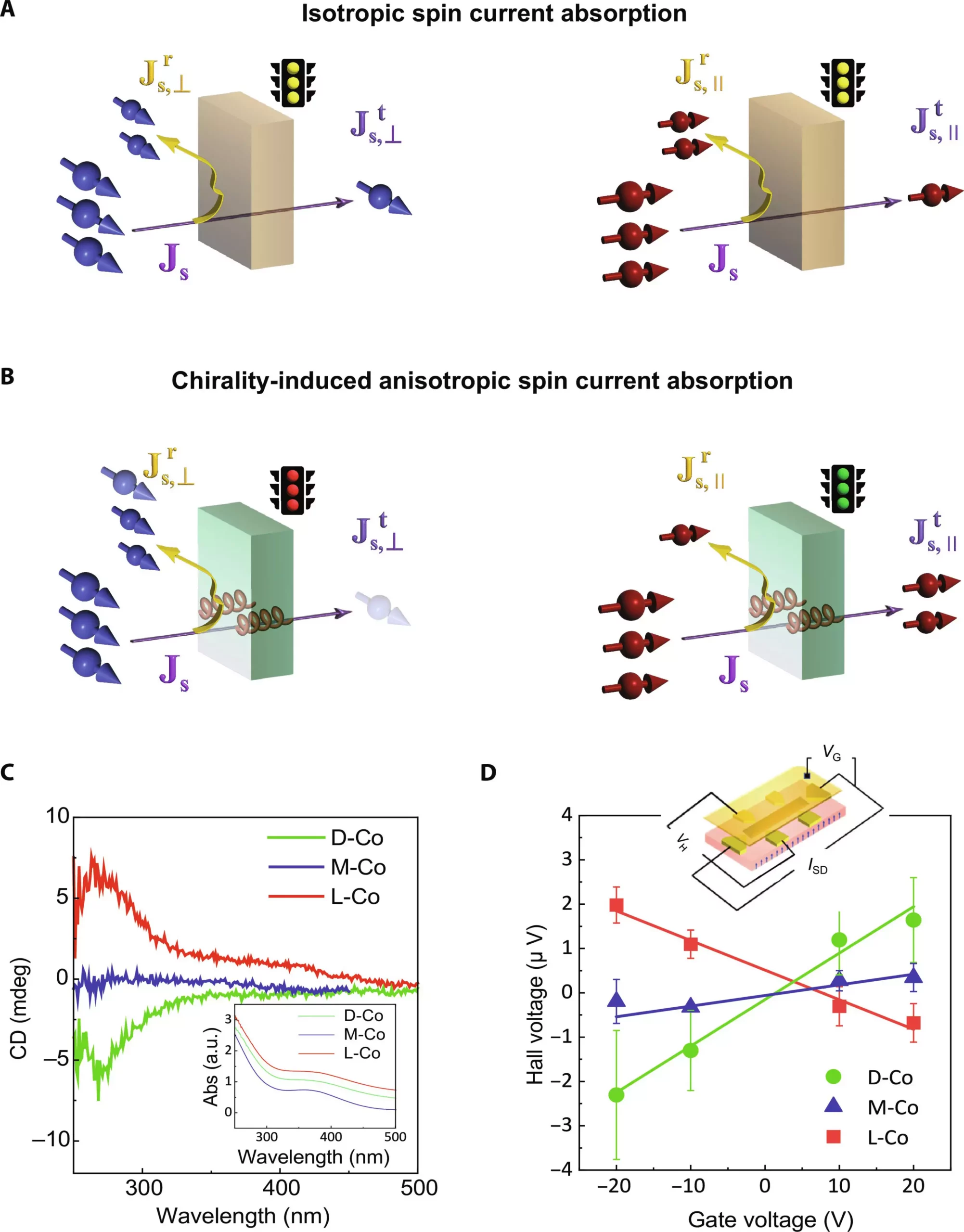In a recent study conducted by researchers from North Carolina State University and the University of Pittsburgh, the focus was on how the spin information of an electron, known as a pure spin current, moves through chiral materials. Chiral materials are unique in that they cannot be superimposed on their mirror image, much like our left and right hands. This study sheds light on the importance of the direction in which spins are injected into these chiral materials and how it impacts their ability to pass through.
Spintronic devices utilize the spin of an electron, rather than its charge, to create current and transmit information through electronic devices. The goal in spintronics is to move spin information through a material without the need to also move the associated charge, which requires more energy and results in devices heating up during prolonged use. Chiral materials serve as “gateways” for spin information, offering a potential avenue for designing energy-efficient spintronic devices for various applications such as data storage, communication, and computing.
The researchers in this study discovered that the direction in which pure spin is injected into a chiral material significantly impacts its absorption and ability to pass through the material. When the spin is aligned parallel or anti-parallel to the chiral axis, there is a significant improvement in its absorption rate compared to when it is aligned perpendicular to the axis. This finding challenges some existing notions about how spin moves through chiral materials and opens up new possibilities for designing chiral gateways in electronic devices.
Two different approaches were used in the study to inject pure spin into selected chiral materials: microwave particle excitation and ultrafast laser heating. Both methods yielded consistent results, emphasizing the importance of the angle between spin polarization and the chiral axis in determining the absorption of spin current in the material. The researchers focused on two chiral cobalt oxide thin films with different chirality, highlighting the potential for utilizing chiral materials in modern electronics.
The findings of this study have significant implications for the field of spintronics and the design of electronic devices. The discovery of chiral gateways for spin information opens up new possibilities for energy-efficient and high-performance spintronic devices. This research challenges existing beliefs about chiral materials and their role in spin movement, prompting further exploration into the dynamics of spin polarization in such materials. As technology continues to advance, understanding and harnessing spin properties for innovative electronic devices will be crucial for driving progress in the field of spintronics.


Leave a Reply